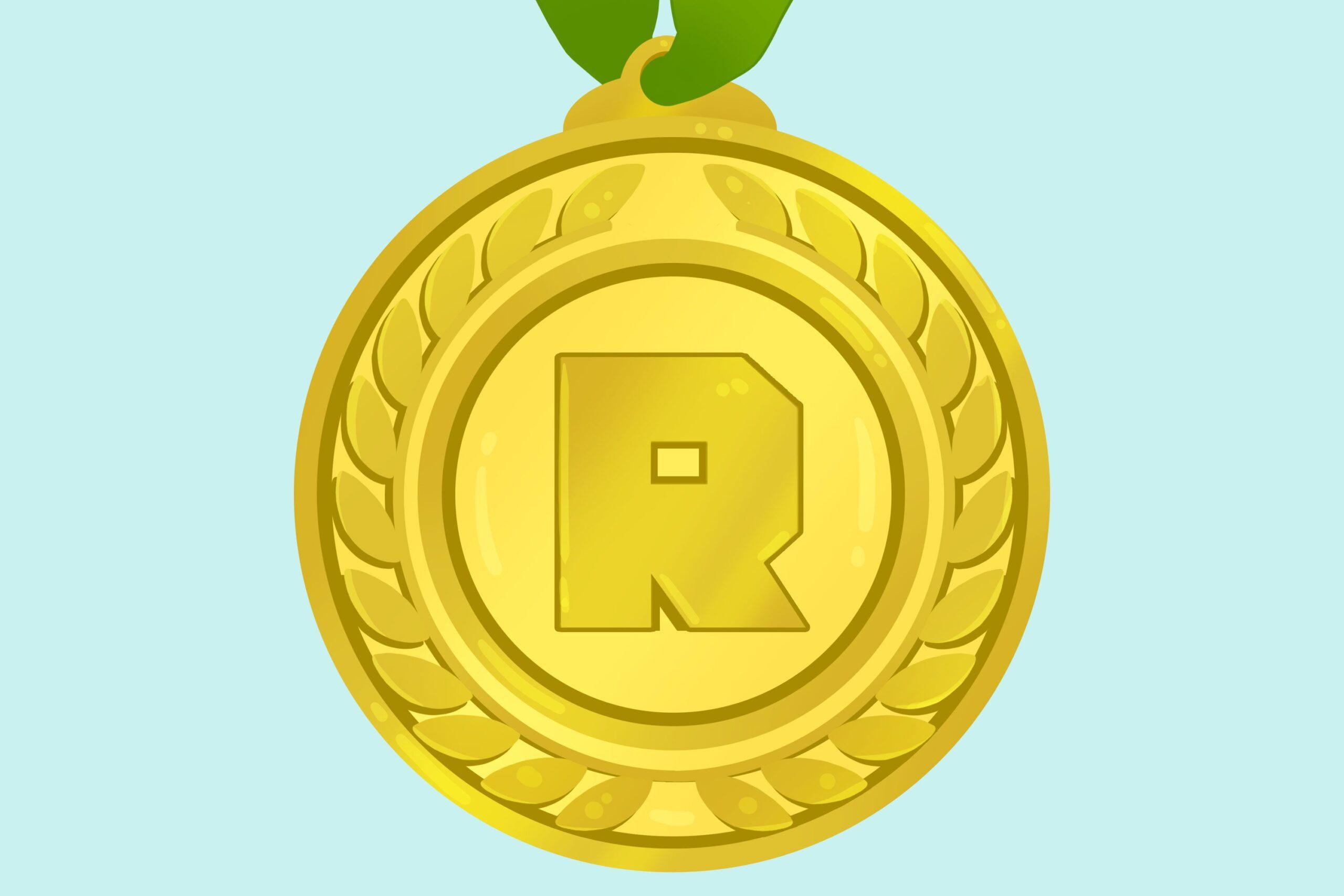I’ll be the walking disaster.
That’s what Mike Testwuide had to say the morning after South Korea lost to Kazakhstan at the 2017 Asian Winter Games in Sapporo. I had traveled to Japan last February to see Testwuide and the South Korean men’s hockey team play a tournament one year before the 2018 Winter Olympics in Pyeongchang. Testwuide is one of seven North American players fast-tracked to Korean citizenship for the Olympics. “Ringers,” they have been called in the press, or more charitably, “foreign imports.” The 6-foot-3 right wing is Korea’s lone American player, and as a top-line forward, one of its most important.
But as it turned out, he’d play in only one game in Sapporo. With Korea trailing 4-0 near the end of the third period, Testwuide went hard to the net and crashed violently into the Kazakh goalie. He was transported directly from the rink to the hospital. The following afternoon, I met him at a cafe near the team hotel. With a stitched-up eye and his left arm in a cast, he looked like … well, a walking disaster.
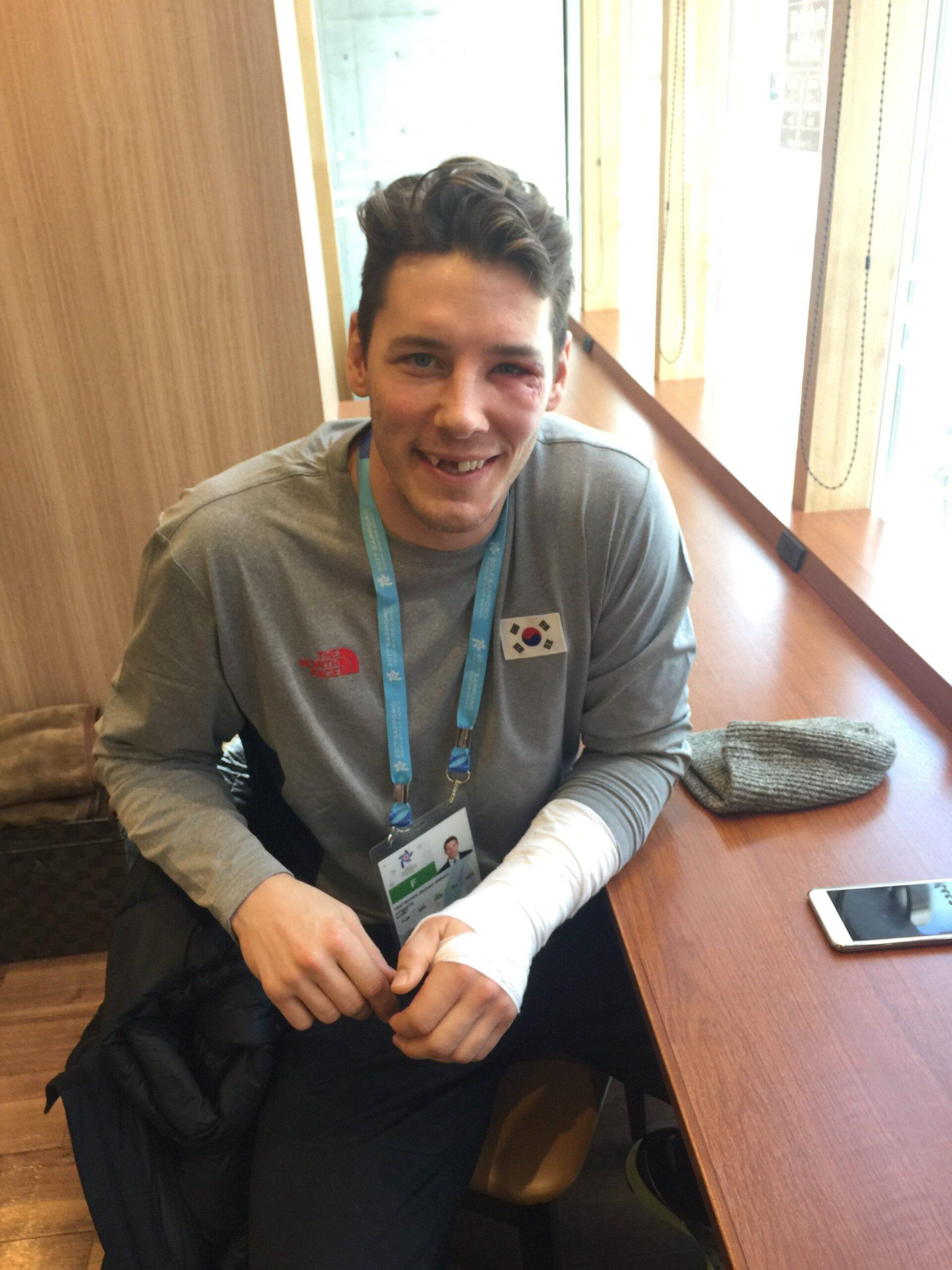
“I don’t have any feeling in my hand or my arm,” said Testwuide. “Pretty scary.”
When his head hit the ice, he feared for a moment that he was completely paralyzed. Relief came a second later when he began to wiggle his legs. “Hopefully, we’ll be able to rehab it good and it’ll be back soon,” he said, nodding to his immobile limb. Testwuide grinned. And then he explained how a kid from Vail, Colorado, came to risk his athletic livelihood on behalf of a country 6,000 miles away from home.
When the South Korean team takes the ice on February 15 to compete in the Winter Olympics for the first time, it will do so with a motley crew that includes Testwuide and six naturalized Canadians, all plucked from Korean teams in the Asia League. Behind the bench will be former NHL defenseman Jim Paek, who in the past four years has improbably elevated Korea from an international minnow to the top division of world hockey.
In fact, there are no shortage of underdog stories at this year’s Olympic hockey tournament, the first since 1994 without NHL participation. In place of superstars like Crosby and Ovechkin, the rosters are sprinkled with has-beens and could-bes. Ex-NHL veterans Brian Gionta (U.S.), Derek Roy (Canada), and Pavel Datsyuk (Olympic Athlete from Russia delegation) will share the ice with precocious youngsters like 17-year-old Swedish defenseman Rasmus Dahlin, the consensus no. 1 pick of the upcoming NHL draft. Among the 12 participating nations, there is no true favorite.
The hosts, however, are the one true long shot. When Pyeongchang was named the 2018 Winter Olympics host seven years ago, the Korean hockey team ranked 31st in the world, just ahead of Mexico. Now, having jumped 10 spots in the world ranking on the path to their Olympic debut, the Koreans expect to be a worthy opponent for the Swiss, the Czechs, and even the top-ranked Canadians. Korea’s Olympic hockey quest, like most successful initiatives in the country, began with government money and an aggressive, methodical plan. But the mission was accelerated with an infusion of overseas talent that some view as a cynical violation of the Olympic spirit. Look a little closer, though, and you might see that the new Koreans are actually bringing that spirit to bear.
In order to earn his Korean passport, Testwuide had to face the 40-odd representatives of the Korean Olympic committee to prove his case. Their question: Why do you want to become a dual citizen?
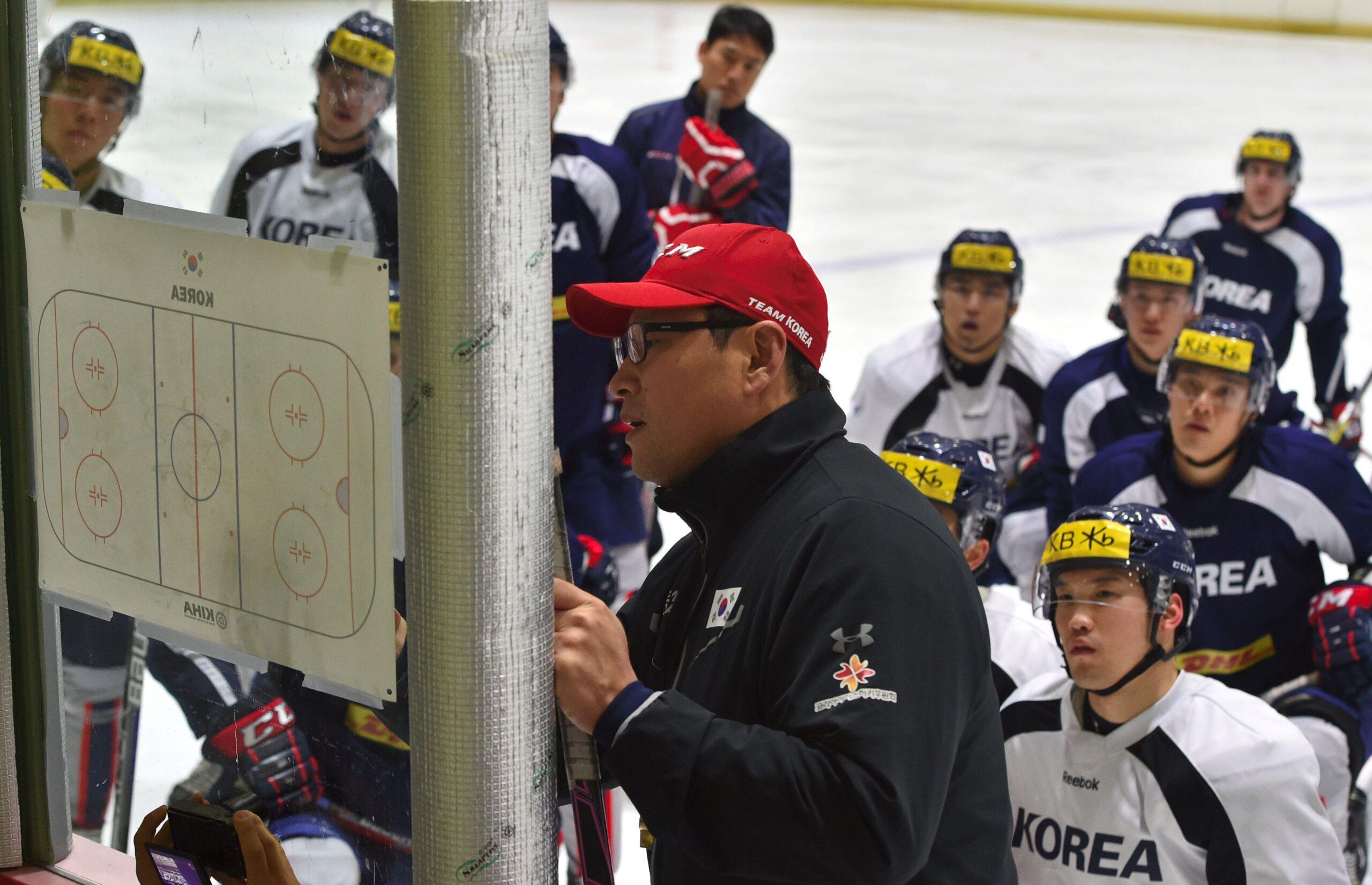
Jim Paek’s broad frame and enveloping handshake are telltale signs of a former pro athlete. I first met the Korean national team coach in the spring of 2015 at a coffee shop in Seoul. At the time, Paek was nine months into the job and still adjusting to his career pivot in a new country. He joked about his rudimentary Korean and acclimating to a bustling international city. His earnestness was unmistakably Canadian, and his words—“systems,” “process,” “mentality”—were fluent coach-speak. He was bullish about hockey’s potential to catch on in Korea, where it lags behind soccer and baseball in popularity. But he was also realistic. To illustrate the scope of the task before him, Paek told me that the national team didn’t even have its own skate sharpener before he arrived. So it wasn’t just a roster of players he had to build in Korea, but an entire hockey culture. Losing face at home on a global stage was not an option.
To illustrate the scope of the task before him, Paek told me that the national team didn’t even have its own skate sharpener before he arrived.
The first player of Korean descent to make the NHL, Paek was the most logical choice to oversee the Olympic project. Paek was born in Seoul in 1967 and moved with his family as an infant to suburban Toronto, where he grew up playing the national sport. He went on to play five NHL seasons in the early ’90s, winning two Stanley Cups as a young defenseman with the Mario Lemieux–led Penguins. (His first NHL goal came off a sweet Mario feed in the ’91 final.) All told, Paek played 16 years of pro hockey before retiring in 2003. He was heading into his 10th season as an assistant coach with the Red Wings’ AHL farm team, the Grand Rapids Griffins, when the Korea Ice Hockey Association offered him a once-in-a-lifetime job. Paek enlisted Richard Park, a 14-year veteran of the NHL and its second Korean player, to be his assistant.
Paek and Park brought instant credibility to a Korean squad that had until that point not been guaranteed a spot in the Olympics. “There’s no sense for the Korean team to be in Pyeongchang and lose 15-0 against Canada, the USA, or Russia,” said International Ice Hockey Federation president René Fasel in April 2014. Korea had previously medaled in figure skating, speed skating, and short track speed skating, but it had never come close to qualifying for Olympic hockey. The IIHF was leery of setting up the hosts for a slaughter, and initially suggested the Koreans would need to break the top 18 in the world ranking to qualify. With the ambitious Paek at the helm, however, the Korean team, then ranked 23rd, was officially granted an automatic bid on September 19, 2014.
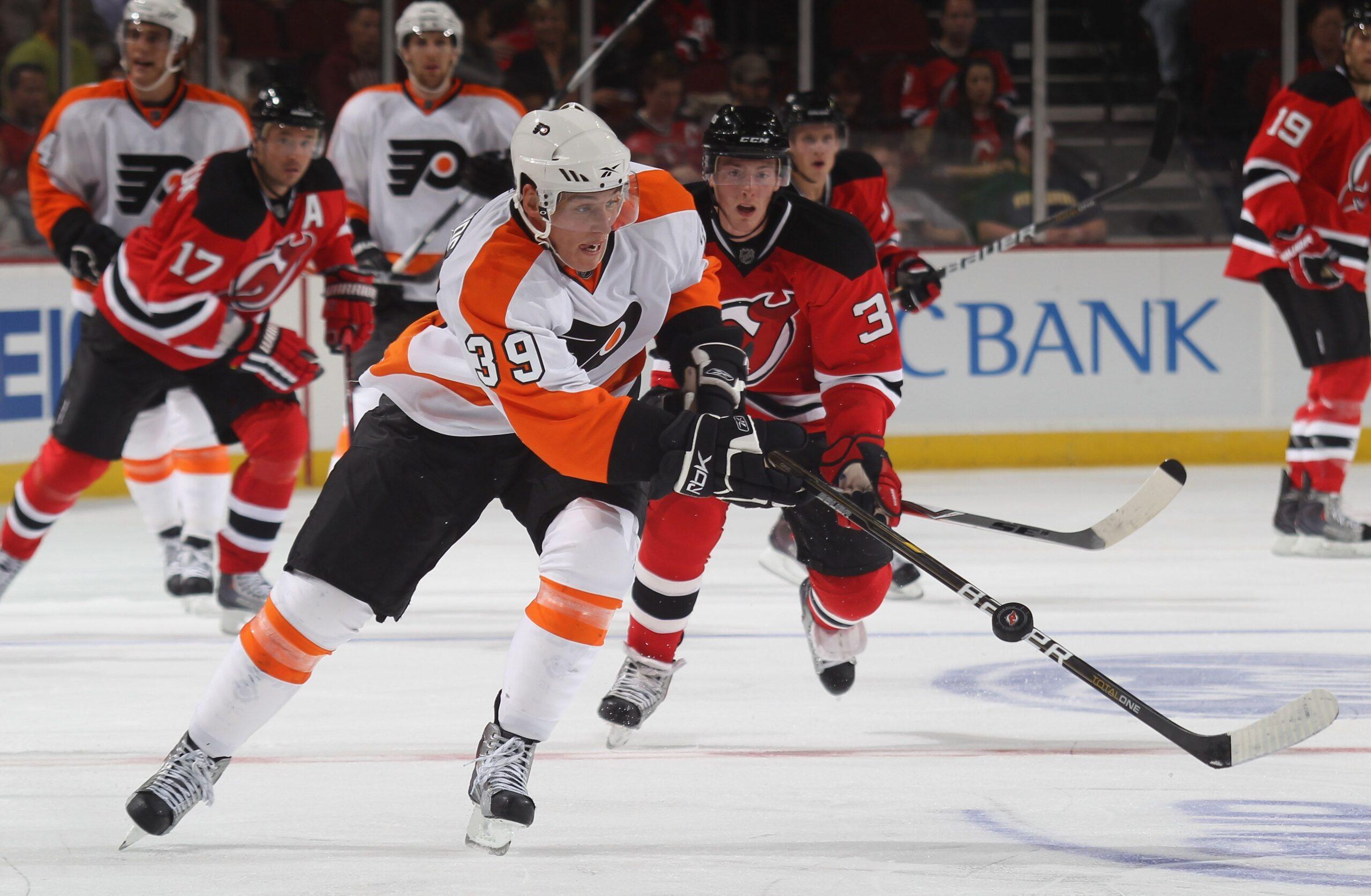
The Olympic dreams of Korea’s foreign imports came into focus only once their NHL dreams failed to materialize. Among his naturalized teammates, Testwuide’s story is not uncommon: a combination of timing, circumstance, and superior competition left him adrift in the unforgiving margins of pro hockey. There, the options are to either toil in North America’s notoriously hardscrabble minor leagues, find a living playing hockey overseas, or give up the sport altogether. Switching nationalities for a chance at Olympic glory might seem opportunistic, but it’s also a reward for perseverance.
Testwuide made it to the doorstep of the NHL. In 2010, fresh off captaining the Colorado College Tigers as a senior and leading the team in scoring, Testwuide signed a two-year entry-level contract with the Philadelphia Flyers. The 6-foot-3, 220-pound rookie made an immediate impression at his first training camp, where he was voted Philly’s fittest player. “When we signed him, he was a good NHL prospect,” says Paul Holmgren, then the Flyers GM, via email. “Mike had good size, decent speed, and skill.”
Size, speed, and skill have been Testwuide’s standout qualities since he first picked up a hockey stick. He and his older brother J.P., the sons of parents who work in Vail’s ski industry, were introduced to the sport by their neighbor Toby Dawson, a Korean adoptee who would go on to medal in moguls skiing at the 2006 Winter Olympics. Once Testwuide learned how to skate, he was a natural. “He was always the biggest kid on the ice,” says his youth coach, Barry Biegler. “What was always unusual was he was also the fastest kid and the most coordinated.”
Hailing from a town of only 5,000 people forced Testwuide to become a hockey nomad from an early age. “We let him make his own decisions, and quite frankly, let him make his own mistakes,” says his father, Paul. As a teenager, he followed his brother to prep school in Lake Placid, N.Y., then back to Colorado to play a year with the under-18 Pikes Peak Miners. Shaun Hathaway, then the Miners coach, recalls Testwuide as “the glue” of the team, an outgoing and charismatic leader. Says Miners teammate Trevor Lewis, now a two-time Stanley Cup winner with the L.A. Kings: “Mike could skate, he’d score goals, he could actually drop the gloves, too—he definitely had all the tools.”
By the time he was a junior at Colorado College, Testwuide was on NHL scouts’ radars; upon graduation, the Flyers beckoned. “I thought he had a chance because of his size and his determination to play at the next level,” says Scott Owens, his collegiate coach. Despite being an undrafted rookie, Testwuide was one of Philadelphia’s last preseason cuts. He spent his first pro season with Philly’s AHL affiliate, the Adirondack Phantoms, finishing third on the team in goals. Heading into the 2011-12 preseason, Testwuide expected to have a realistic shot at breaking the Flyers roster.
And then, Philadelphia signed Jaromir Jagr. The future Hall of Fame right wing immediately knocked Testwuide down a peg on the depth chart. He was soon sent back to Adirondack, waiting for an NHL call-up that never came. “The Flyers had a deep group of forwards when Mike was here,” says Holmgren. In the minors, life in the rough-and-tumble AHL began to sap Testwuide’s passion. “They call it ‘The Jungle’ for a reason,” he told me in Sapporo.
Like many fringe prospects in the AHL hoping to fill a fourth-line need with their parent club, Testwuide had to literally fight to keep his NHL dream alive. “It became survival mode. I fought some really tough guys and did well, but I had a lot of anxiety about it,” Testwuide says. “Hockey became less and less fun for me.” In February 2013, Testwuide was traded from Philadelphia to the Flames, and was immediately assigned to Calgary’s AHL team in Abbotsford, British Columbia. By the time that season ended, he was ready to give up on the NHL and move abroad to continue his career.
At 26, he still possessed the tools to attract interest from top-flight European pro leagues. Testwuide was days away from joining a team in Augsburg, Germany, when his old buddy Jeff Dimmen called him. The two had played together at Pikes Peak and crossed paths again in Adirondack. Now Dimmen was headed to Korea to play for the Anyang Halla in the Asia League. Roster quotas restricted teams to a limited number of foreigners, but another import slot had opened up. Would he consider joining him? “I was like, ‘Shit, man, all right,’” Testwuide says. “It seemed like a really cool opportunity to do something with your best friend that was totally out of the box.”
When Testwuide signed his contract to play for the Anyang Halla in 2013, the thought of playing for the Korean Olympic team in 2018 was on the radar, though Testwuide says it was “a pretty miniscule part” of the deal. Two seasons later, Testwuide had carved out a niche as the Asia League’s premier power forward. Paek and the Korean national team were missing a net presence on the team’s top line.
“Jimmy approached me,” says Testwuide, “and asked if I’d be interested in becoming a Korean citizen and helping the team.”
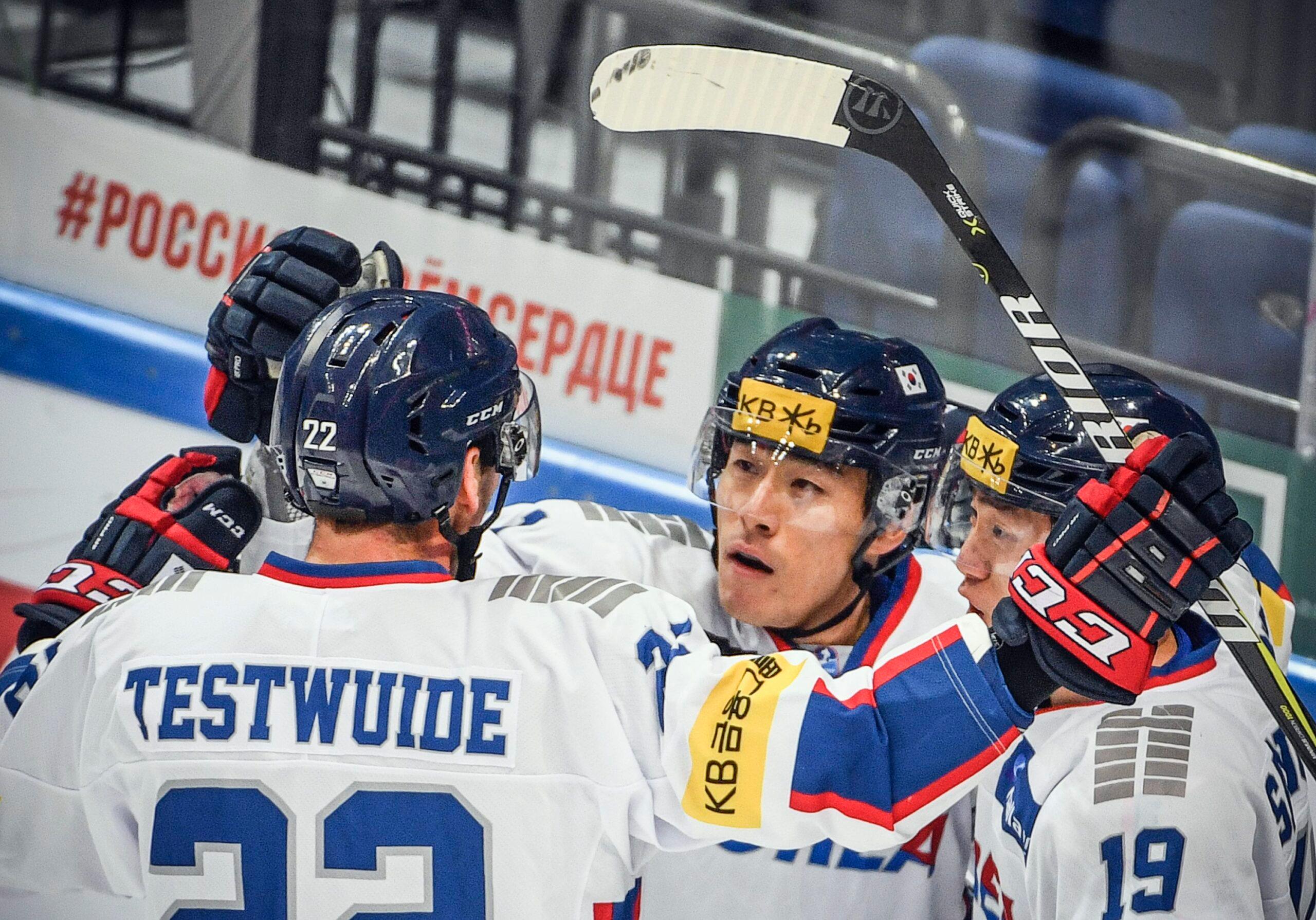
In 2014, the Korea Ice Hockey Association’s goal was clear: to field a competitive team in time for Pyeongchang 2018. The government, along with the KIHA and the IOC, laid down a $20 million investment plan. Several promising Korean players had already gone to Europe to compete in the Finnish second division. Using Paek’s NHL connections, a few others spent a summer at the Dallas Stars’ development camp. Back at home, Paek began implementing his systems with the crop of Korean players at his disposal. He was surprised by their speed, tenacity, and work ethic. “The players have been fantastic,” he told me. “They want to learn, they want to get better.” The issue was scarcity. “The numbers we have to choose from is not great like the rest of the world, the great hockey nations,” said Paek. In 2013, the IIHF counted 1,744 registered hockey players in Korea, the vast majority of whom were under age 20. (In comparison, Canada had 721,504 total players and the U.S. had 519,417.) So reinforcements were needed, not only to fill tangible roster needs but also to bring North American experience that the Korean players could emulate.
A 2011 change to Korean immigration law worked in the team’s favor. At the start of that year, Korea began permitting dual citizenships, including to “foreigners of outstanding talent.” Olympic eligibility, based on Charter Rule 41, simply states that “any competitor in the Olympic Games must be a national of the country” for which he/she is competing. In previous Games, countries have exploited this famously lax rule to more mercenary ends; the individual sports federations of each country have great latitude in setting their own standards for citizenship changes. In Sochi 2014, at least 120 of the nearly 3,000 competitors represented a country other than the one in which they were born. At that Winter Games, South Korea had only one naturalized citizen; in 2018, it will have 19.
For Korean hockey, IIHF eligibility requirements made the prerequisite for a men’s player switching nationalities relatively stringent: at least two consecutive hockey seasons and 16 consecutive months in the domestic league of his new country. Thus, the KIHA set its sights on the handful of active foreign players on Korean teams in the Asia League. The Korean national team had plenty of speedsters, but lacked size and grit. In 2013, Canadian-born center Brock Radunske, who has lived in Korea since 2008, became the first athlete without Korean ancestry to become a Korean citizen. The following year, cousins Bryan Young, a defenseman, and Michael Swift, a prolific forward, joined him. Testwuide was next to become naturalized, in 2015. To solve the team’s biggest weakness, Korea recruited goalie Matt Dalton, a former Bruins prospect who had come to the Asia League from Russia’s KHL. Adding two more tall defensemen, 6-foot-2 Eric Regan and 6-foot-4 Alex Plante, the Korean Olympic roster would eventually feature seven imports—six Canadians and one American. With the exception of Young and Plante, who each had brief NHL stints with the Edmonton Oilers, the rest were career minor leaguers.
Although they’ve changed their nationalities, they’ve all been here for over two or three years, and we’ve created a good team spirit.South Korean national player Kim Ki-sung
Imported talent inevitably meant fewer available spots for Korean players to make the Olympic team. While in Sapporo, I asked 32-year-old forward Kim Ki-sung, the longest-serving national team player, about how his compatriots felt about their new foreign teammates. “After one guy, two guys got naturalized, there was some thought amongst the Korean players, if I’m being honest, that [the arrivals] might block opportunities for some other players,” he said. “It was a little … difficult.” Once the new guys settled in, however, it got easier. “Although they’ve changed their nationalities, they’ve all been here for over two or three years, and we’ve created a good team spirit,” said Kim, who centers Testwuide’s line.
Sportswriter Yoo Jee-ho, who has been covering Korean hockey for the Seoul-based Yonhap News Agency, told me that the Korean public’s reaction has generally been either positive or indifferent. “Korea has long been a very homogenous society but I think people now accept that there are people born in different countries and with different skin colors who have Korean passports and are legally Koreans,” he said. “In terms of the Olympics, people know past Winter Games host cities have also brought in foreigners and naturalized them in hockey and other sports. It’s par for the course.” The past two Winter Olympics hosts without significant ice hockey experience were also full of imports: For the 1998 Games in Nagano, Japan enlisted a group of foreigners dubbed the “Six Samurai,” while Italy brought in nine Canadians for Torino 2006. However, the foreigners on those previous Olympic teams had at least some ethnic ties to their respective nations.
Still, the new Koreans have been embraced by their teammates just the same. “You could say they are foreigners that love Korea more than Koreans themselves,” said captain Park Woo-sang.
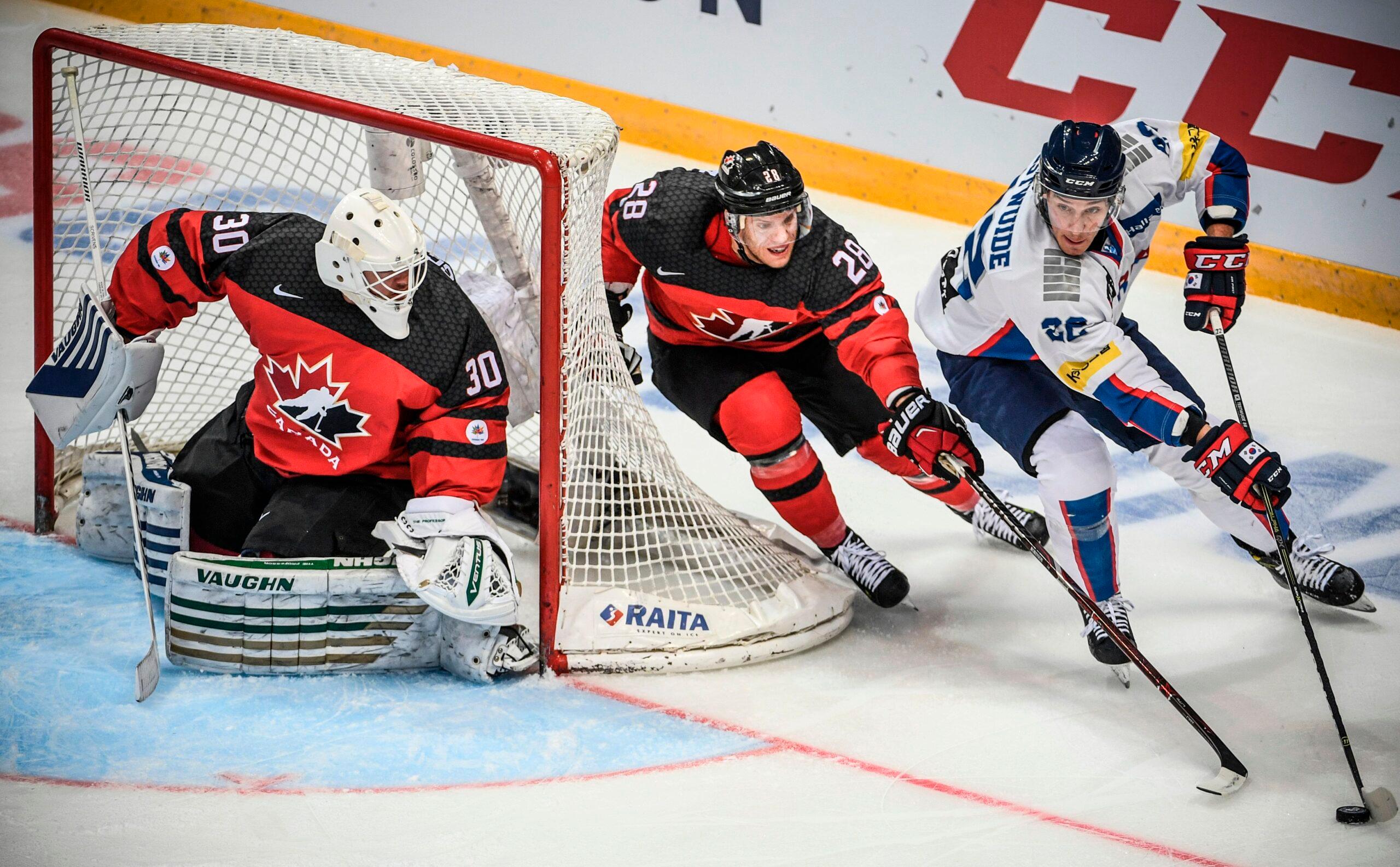
“It was a surreal experience pulling on that jersey for the first time,” says Testwuide of his international debut for Korea in 2015. “But I had the comfort of teammates I’ve played with for years. People don’t realize how much time you spend with those guys and how close you become.” It helped that the sport’s nature generally calls for the sublimation of ego in favor of team chemistry. “I’m not here to steal the glory and make it about me, this American who’s on Team Korea.”
Five years into his Korean life, Testwuide has retained his easygoing ski-bum charm while fully assimilating into the local culture. (“Mike eats, sleeps, and breathes it,” his mom, Janet, told me.) “I mean, I do everything,” he says with a laugh. He has survived Seoul nightlife benders, soju hangovers, the spiciest of foods, and batshit traffic. He knows all the words to the national anthem—part of the citizenship test required him to sing it before a pair of government officials. He understands the way age affects interpersonal dynamics in Korean culture, and has played his part accordingly. “He’s really adapted well to the Korean society,” says Coach Paek. In his spare time, Testwuide takes swings at the screen golf setup on the second floor of his luxury apartment building. It doesn’t get much more Korean than that.
Last summer, Testwuide left the Anyang Halla, where he won back-to-back Asia Hockey League championships, to sign with the cellar-dwelling High1. (Signing with High1 means Testwuide and Dimmen are teammates again for the fourth time.) “I feel bad leaving Halla but at this point in my career it’s a business as well,” he says. When I visited him in Korea last November, Testwuide was living in Ilsan, about an hour’s train ride away from Seoul. He described the arduous rehab from his Sapporo injury—a concussion, nerve damage, and a broken hand—and how he felt healthier than ever. We talked about how local interest in the men’s Olympic team was still muted at best. (Soon after, the women’s team, with its unified North Korean–South Korean roster, would steal all the hockey headlines.) And there was the matter of Korea’s next and even more difficult tournament, after the Olympics, at the IIHF Ice Hockey World Championship in Denmark in May. Korea nabbed a spot in that tourney, which will feature NHL talent, not via automatic bid but by earning promotion. “I don’t think people realize, but that’s gonna be even harder,” says Testwuide. It wasn’t long ago that the IIHF treated the Korean national team like a charity case; now the team is qualifying for major tournaments on its own. (The Chinese national team, currently ranked 37th, has a model to follow en route to the 2022 Winter Games in Beijing.)
How much the sport’s popularity grows in Korea depends largely on how well Team Korea does in the Olympics. Could home support propel them to an improbable run, à la the Korean soccer team of the 2002 World Cup? Despite the team’s improvement and the lack of NHL opposition, it remains unlikely. At a December warm-up tournament in Moscow, the Korean team faced Canada, Finland, and Sweden for the first time. In total, they were outscored 13-4 over three games, and goalie Matt Dalton was peppered with 156 shots. (Testwuide’s line, which features brothers Kim Ki-sung and Kim Sang-wook, scored all four goals.) The Koreans, with their speed and work ethic, were competitive in each matchup, but were eventually outclassed—a likely preview of what’s to come in Pyeongchang, where they will play the sixth-ranked Czechs, the seventh-ranked Swiss, and world no. 1 and two-time reigning Olympic champion Canada. Winning a single game would be a huge accomplishment.
But even if a medal is out of reach, there will be small victories. The Korean government’s return on its investment will be a national team that can hold its own against global powers. Coach Paek will have the launching pad to further evangelize his lifelong passion of hockey in Korea. And for the native Korean players and imports alike, the first Olympic puck drop will be the culmination of years of preparation and sacrifice.
Back to that citizenship meeting, and the Olympic committee’s question to Testwuide: Why do you want to become a dual citizen?
“I’ve played with these guys and I love these guys, and I would like nothing more than to help them succeed and get better and grow,” he replied. “I want to be part of promoting the game in Korea. Getting the citizenship is part of a bigger thing than myself. It is about the game that I love and giving back to it.”
